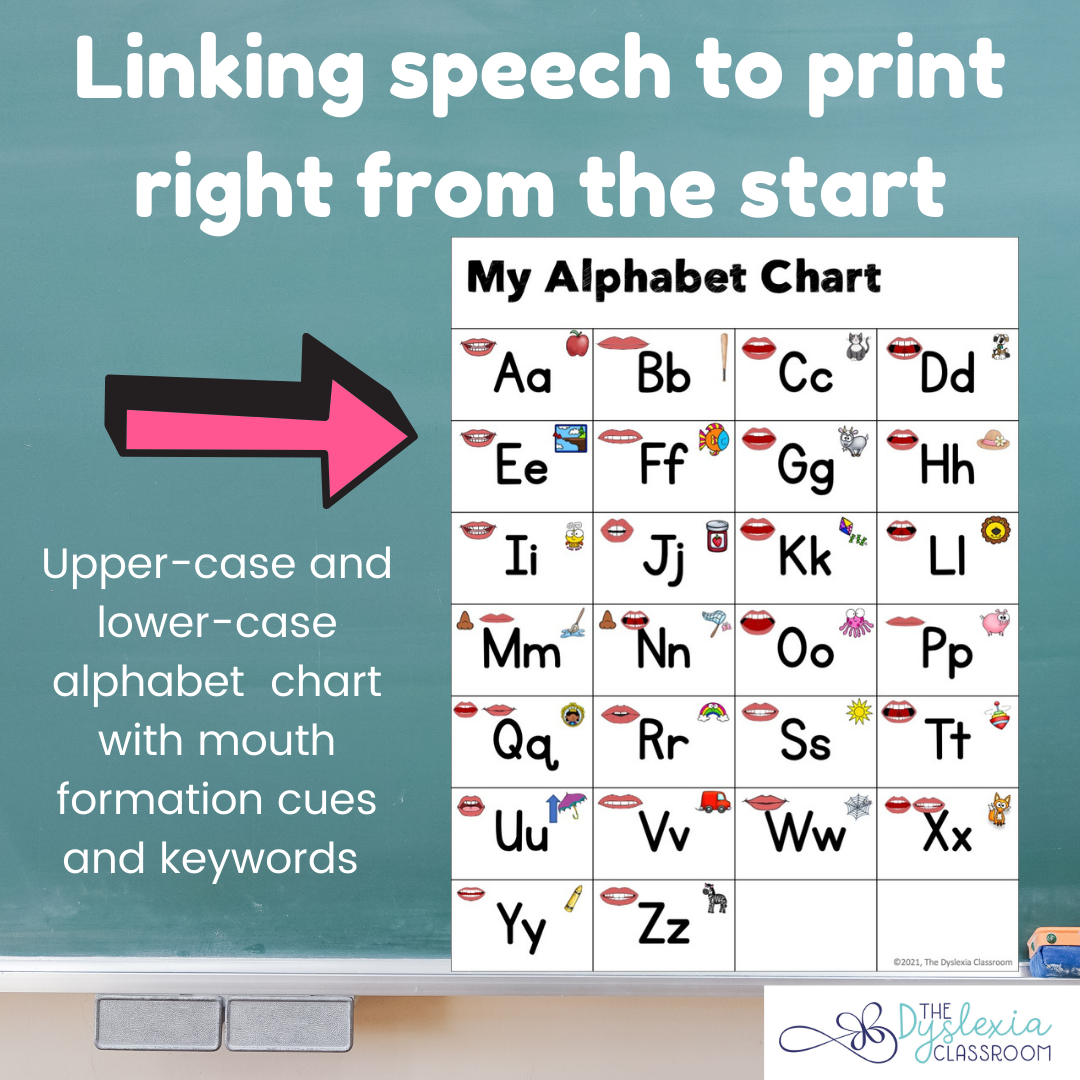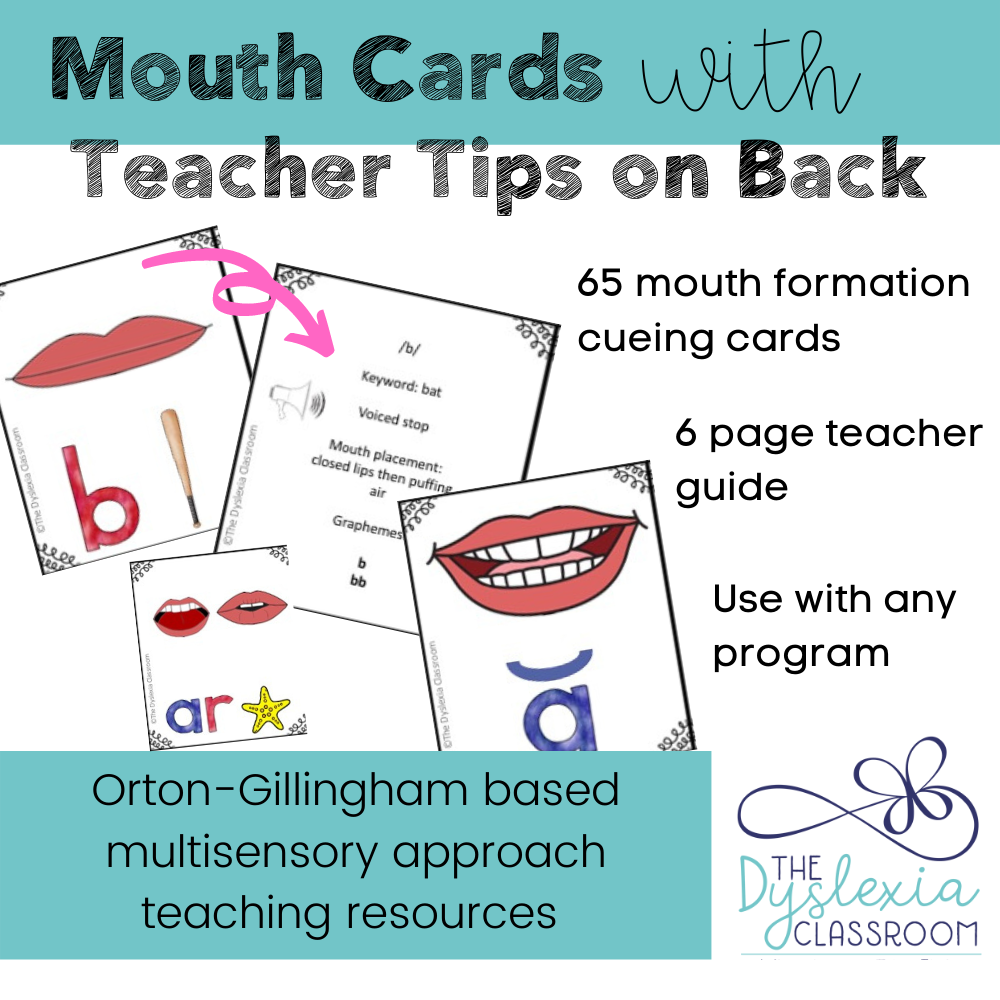3 Tips For Building Phonemic Awareness

Recently, in the education world, there has been a lot of talk about phoneme awareness and its importance in reading instruction - with good reason! As classroom reading instruction shifts, finding ways to bridge the research to instructional practices is crucial. But with this comes a need to understand what the research means for our work and our students.
There is widespread agreement that phoneme awareness skills such as perceiving sounds in speech, isolating sounds, and blending and segmenting words are the foundation for learning to read and write. A National Reading Panel in-depth review of 52 phonemic awareness articles found that explicitly teaching phonemic awareness directly impacts children's reading significantly more than instruction without any attention to phonemic awareness. This evidence was so clear that they recommended that explicit phonemic awareness instruction be a part of classroom reading instruction beginning in preschool.
Looking at the Phonological Pro...
How To Build Phonemic Awareness In A Fun Way

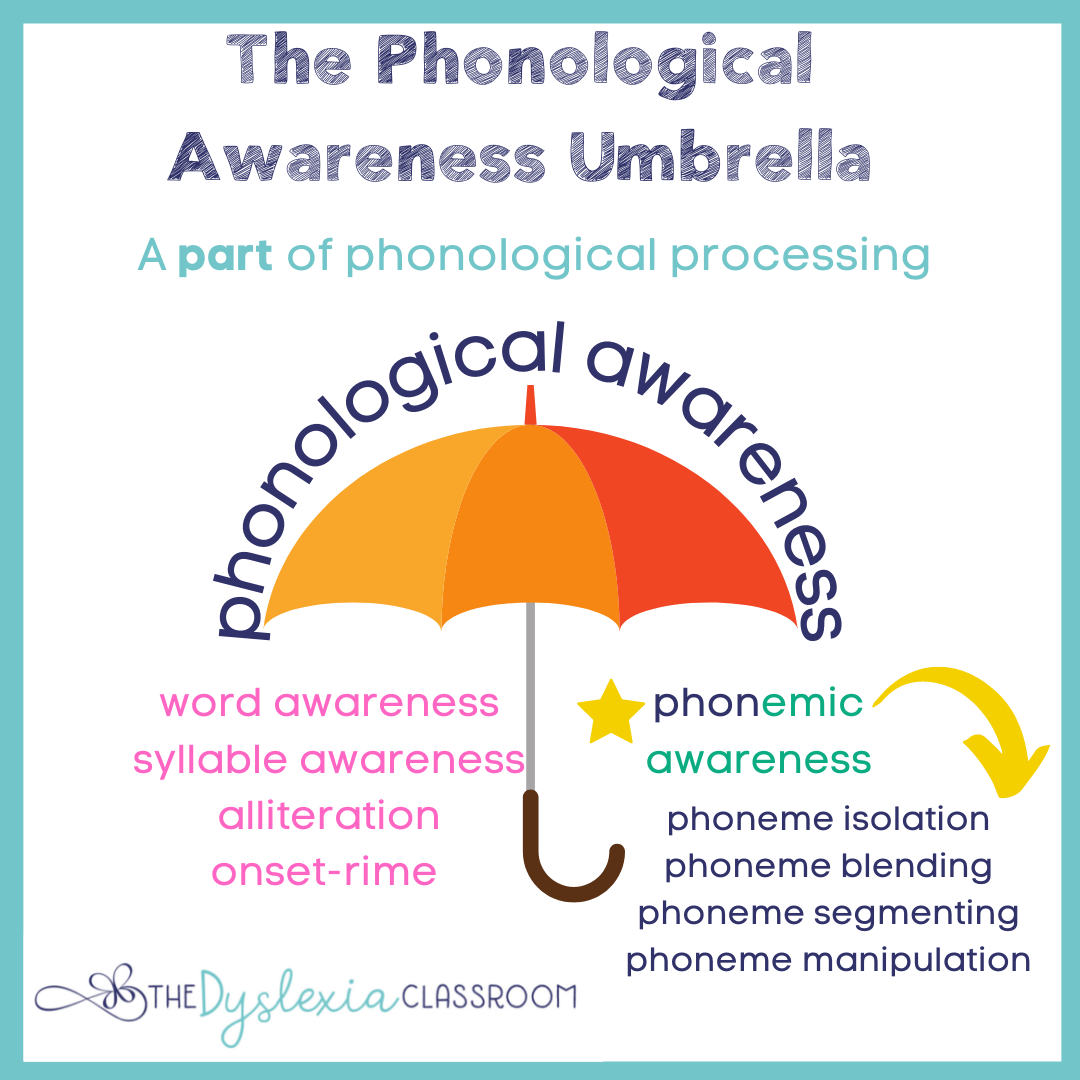
What Research Says About Articulatory Awareness in Reading Instruction
This week on Instagram when I shared the alphabet chart I use with my early learners, including mouth formation cues and corresponding keywords, I received a question about the research behind articulatory awareness regarding reading instruction. It is so important that our work be grounded in current research, so I appreciated this question and want to address it here.
In my work with students, we focus on the speech-to-print approach. I explicitly teach phonemes, or those individual speech sounds, to students. We begin by introducing the sound and connection to the mouth formation. Research shows that our brain makes memory traces of sounds by paying attention to our mouth formations. When we begin with this sound, we're laying the foundation for knowledge of graphemes. This articulatory awareness anchors our phoneme-grapheme correspondences.
Obviously, I am a big proponent of beginning my literacy instruction by focusing on speech production and then linking that knowledge to t...
The Multiple Learning Opportunities of a Spelling Dictation Lesson
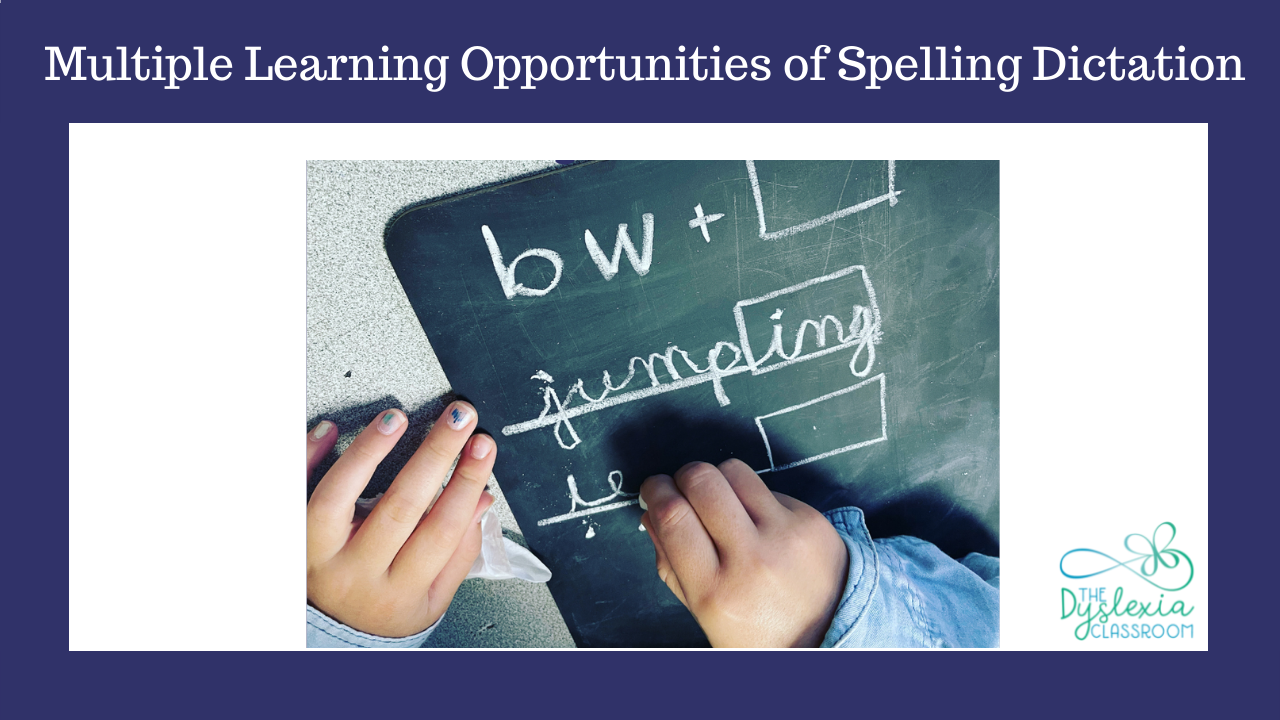
It is said that a picture is worth a thousand words. I like to snap photos of small moments in lessons and reflect on all we've accomplished. It's like a window into learning. I believe in finding ways to have every task target and reinforce multiple aspects of learning. This little photo is a perfect example.👇
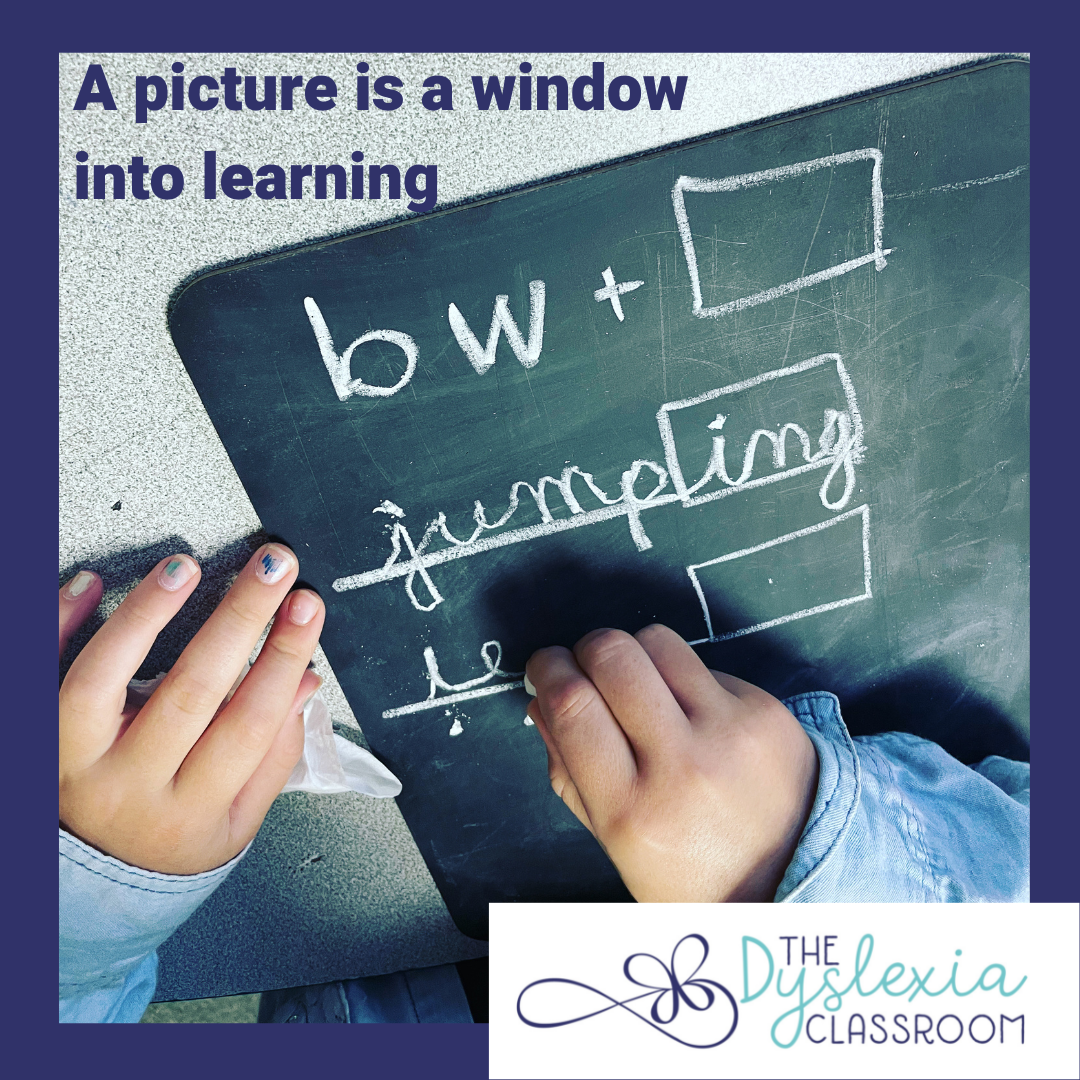
There is so much happening in this simple snapshot of a spelling dictation within a lesson! While this portion of the lesson is generally 5-7 minutes, you can see how much is covered and reinforced - a lot!
Multi-Sensory Handwriting
Our goal is to always move towards the automaticity and fluidity of writing. We can promote the practice of letter formation strokes in a multi-sensory way (chalk, sand trays, play dough, sandpaper, shaving cream, etc.). Practicing letter formations, the same way, creates the muscle memory needed to make handwriting automatic.
When students have labored handwriting, it impacts their ability to focus on the higher-level writing tasks because th...
Three Ways to Use an Alphabet Arc for Word Building, Part 3
Today's blog is part 3 of a 3 part series on word-building tasks you can incorporate into your lessons using your alphabet arc. If you missed part 1 or part 2 of the series, click each link to learn additional skills to build with the alphabet arc.
Practice makes permanent! This saying is something that I come back to often as I reflect on my lessons. Am I providing enough practice for my students to solidify their learning and gain automaticity in word reading? We know that the brain needs to make new neural pathways to convert our oral language to the linguistic code as there is no specific reading center in the brain. It's hard work!
Children who are learning to read need to spend time decoding - the practice of linking speech sounds to print. This decoding work is the heavy lifting that needs to occur during reading instruction to allow for the orthographic mapping process to occur.
Orthographic mapping is the process that we use to become successful readers. It involves the ...
Things You Might Not Know About Liquids, Glides, and Combinations
Hi friends! This week I'm finishing up our review of the consonant sound groupings. If you are working on implementing a sound wall or shifting your approach to teaching phonics, then this is a great review.
We now understand that sound production and mouth formations are key to helping students link the phonemes, those sounds that they hear, to the graphemes, which are the letter representations of those spoken sounds. They also provide students and teachers with cues for error corrections. Explicitly teaching these to our students provides them with the knowledge and ability to analyze sounds in a deeper way. These articulatory gestures are grouped by stops, fricatives, nasals, affricates, liquids, glides, and combinations. You can find the whole series through the links at the end of this post.
In this week's post and video, we're going to be reviewing liquids, glides, and combinations. Liquids are those sounds that seem to float in our mouth. They influence the vowels that come b...
What in the world are affricates?
Hi friends. This week, I am continuing our review of the consonant sound groupings. If you are working on implementing a sound wall, want to review your sound production, or even just want to look at teaching phonics in a different way, then this week's post is for you.
Sound production and mouth formations are key to helping our students link the phonemes, sounds that they hear, to the graphemes, which are letter representations of those spoken sounds. It also helps students and teachers with cues for error corrections. Explicitly teaching this to our students can help them deepen their knowledge and understanding of our language system. If you haven't heard of the term affricates, you're not alone. Many programs or trainings may not introduce this term, however, my guess is that you're already teaching them. Consonants are usually grouped or taught according to their articulation features or how the sound is made. These articulatory gestures are grouped by stops, fricatives, nasals,...
Let's Talk About Nasals
Hi friends! This week, I'm going to continue our review of the consonant sound groupings. If you're working on implementing a sound wall, or you want to shift how you approach teaching phonics, then this week's post is for you. 😊
Research shows that our brain makes memory traces of sounds by paying attention to mouth formations. When we begin with the sound, we're laying the foundation for knowledge of graphemes, or letters. This anchors our phoneme-grapheme correspondences. In my work with students, I focus on this speech-to-print approach where I explicitly teach phonemes, or those individual speech sounds, to students. I begin by introducing the sound and connection to the mouth formation.
What about those nasal 👃 sounds?
If you haven't heard of nasals, you are not alone. Many programs or trainings may not introduce this concept, but I think you should and here's why. Consonants are usually grouped or taught according to their articulation features, or how the sound is made. Thes...
What in the World is a Fricative?
Hi, friends! Today, we're continuing our review of the consonant sound groupings. If you are working on implementing a sound wall or you want to shift how you approach teaching phonics, then this is for you.
In my work with students, we focus on the speech to print approach when we explicitly teach phonemes, or those individual speech sounds, to students. We begin by introducing the sound and connection to the mouth formation. Research shows that our brain makes memory traces of sounds by paying attention to our mouth formations. When we begin with this sound, we're actually laying the foundation for knowledge of graphemes. This anchors our phoneme-grapheme correspondences.
Consonants are usually grouped, or taught, according to their articulation features or how the sound is made. We can group some consonant sounds into voiced and unvoiced pairings. These pairings are grouped based on mouth formation, where the mouth placement is, where it's the same, and the only difference is if t...
Top Strategies to Teach Stop Sounds
Hi, friends! I've recently had quite a lot of requests to chat about the topic of teaching stop sounds. This week, I've created a video detailing effective ways to teach this. I've also included links and information about the resources that I reference in the video. You will find them below. 👇 Click on each image to see more of the product.
When we explicitly teach phonemes' articulatory features, we are helping to create links between the individual speech sounds and the letter representations. These mouth cards are designed to guide and support mouth placement and sound production directly.
The cards tell you where the sound comes from within our mouth (front, middle, or back of the mouth), the manner of articulation (what are the teeth, lips, and tongue doing), and the use of voice or unvoiced sound production to strengthen phonological awareness, reading, and spelling. These mouth formation cues are essential for anchoring sounds to letter representations, especially for ...

